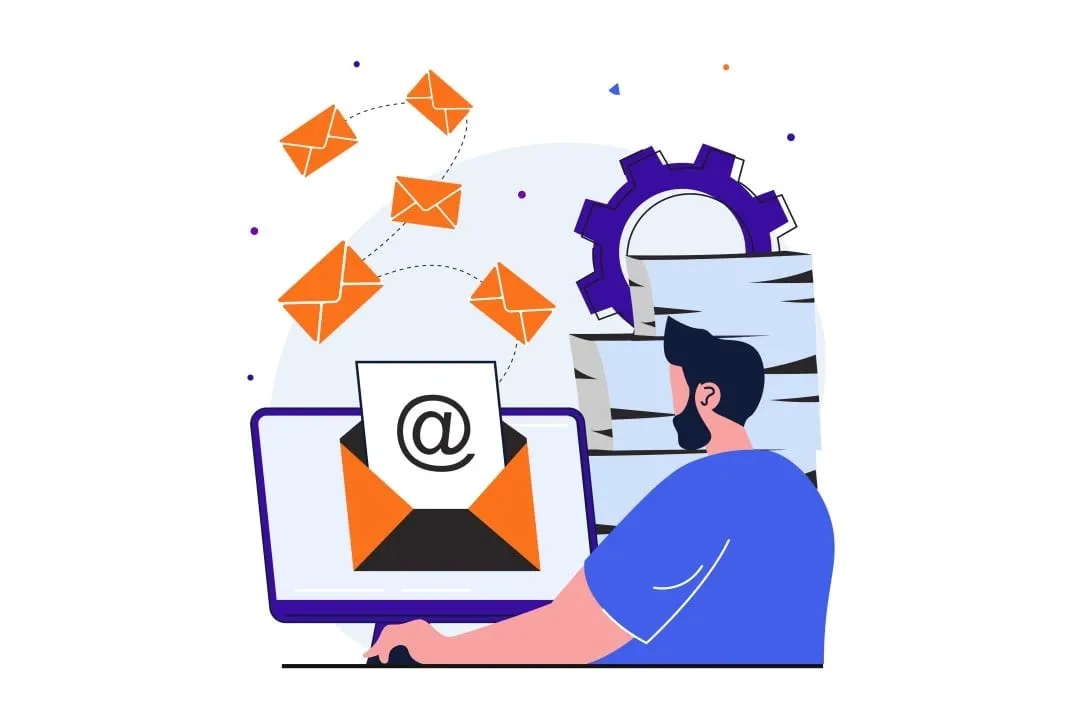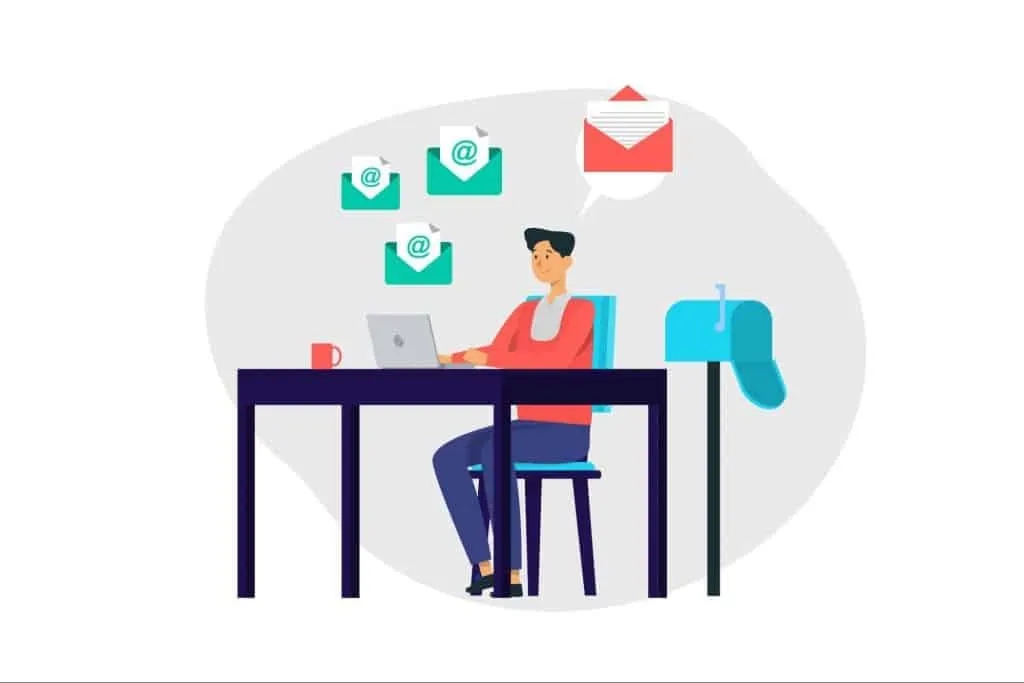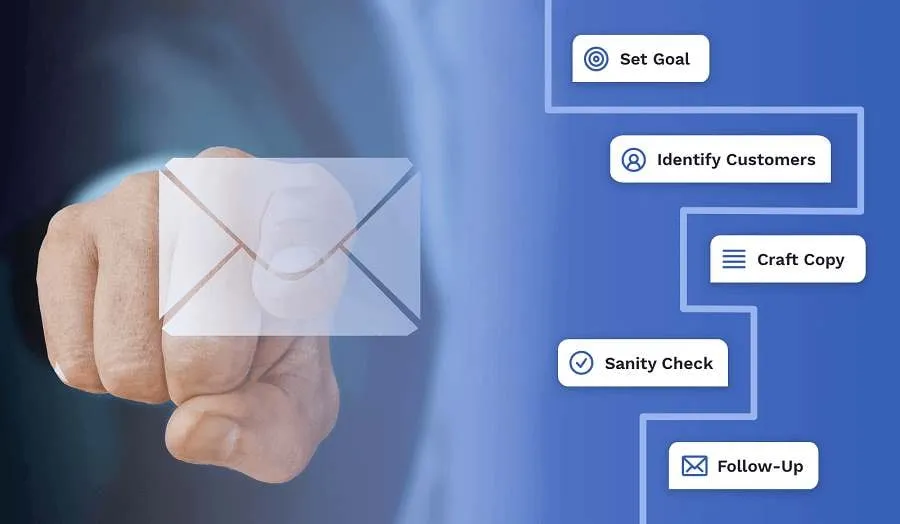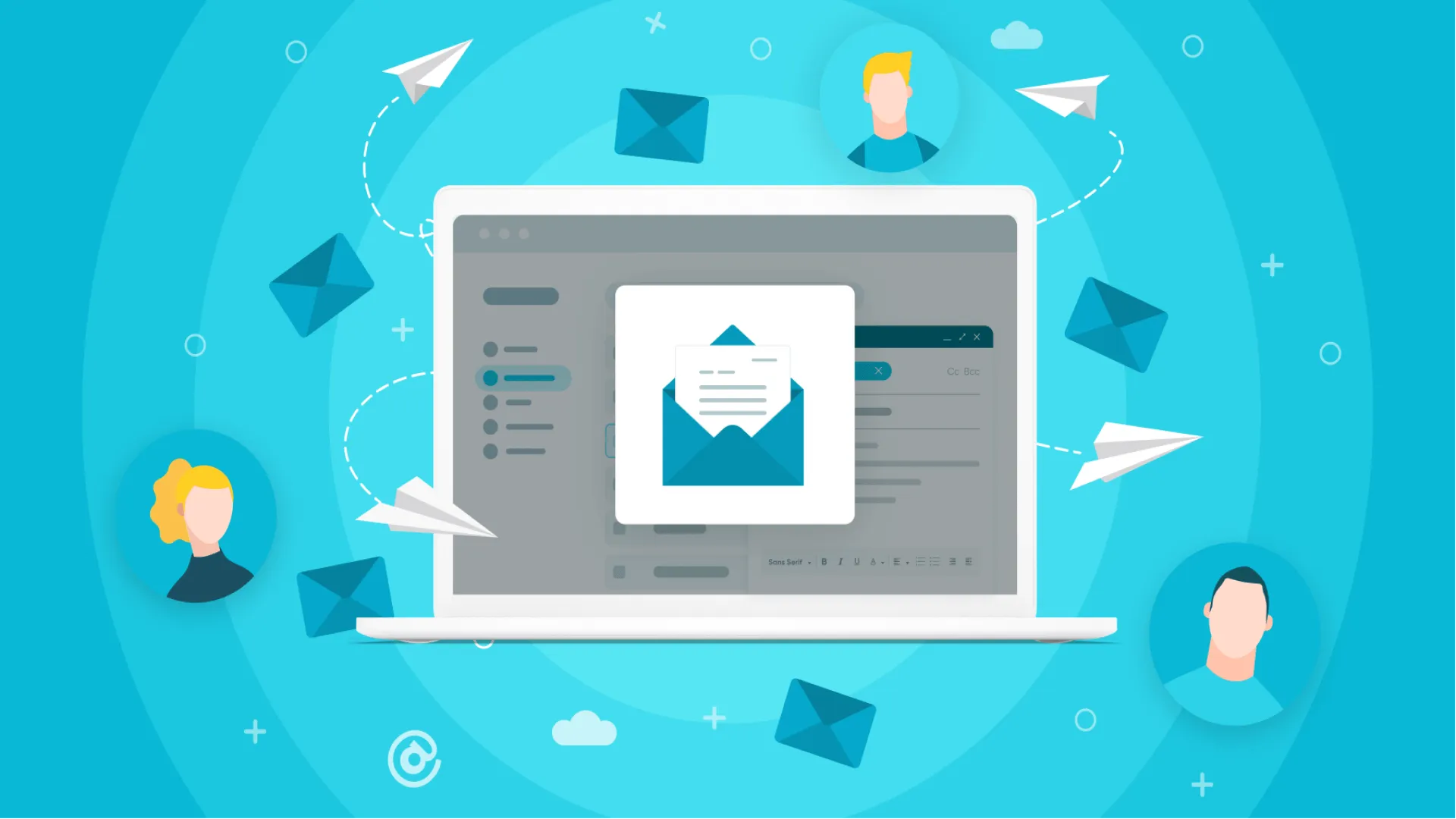Cold outreach is a vital strategy for reaching potential customers and expanding your network, especially when direct connections aren’t yet established. It involves sending unsolicited emails to individuals who may be interested in your product or service, with the goal of sparking a conversation.
While cold emailing can be a powerful tool, many businesses struggle with how to approach it effectively. In fact, 49% of professionals say that email is their preferred channel for business communications (HubSpot). But simply sending cold emails isn’t enough, you need to craft well-thought-out cold email campaigns that engage your target audience.
In this guide, we’ll walk you through 7 proven strategies for successful cold email outreach, helping you improve your approach and connect with the right people. Ready to take your cold outreach campaign to the next level? Let’s dive in.
What is Cold Outreach?

Cold outreach is a method used to initiate contact with potential clients or customers who have no prior relationship with you. It typically involves sending unsolicited emails to engage recipients, such as cold emailing or cold email outreach efforts.
These emails aim to generate leads, share a product or service offering, or introduce a business. The process often includes crafting well-crafted cold email templates, using a compelling subject line to avoid being caught in a spam folder, and including a clear call to action to encourage responses.
It's essential to comply with anti-spam laws and avoid common cold email mistakes to maintain a positive sender reputation.
How does It work?
Cold outreach works by sending unsolicited messages to potential clients who have not interacted with your business before. This method relies heavily on reaching recipients through email, aiming to engage them with a compelling message about your product or service.
To maximize effectiveness, the email should have a strong value proposition, tailored to the recipient’s needs. A clear and specific call to action is critical in guiding recipients toward a response.
Sending cold emails requires careful attention to email deliverability and ensuring compliance with anti-spam laws. Follow-up strategies may be employed to re-engage prospects who didn’t respond initially.
The Importance of Cold Outreach
Cold outreach helps connect with potential clients or customers who may not be aware of your business. It’s an affordable way to engage a large audience without significant investment.
Initiating contact through cold outreach can eventually lead to long-term business relationships.
Cold outreach campaigns can be expanded to target more prospects, helping businesses grow quickly. Well-targeted cold emails can drive interest in your product or service and generate leads.
Cold outreach opens doors to partnerships, collaborations, and new business ventures. Reaching out to new prospects increases awareness of your brand and what it offers.
What is Cold Emailing? How Does It Help in Outreach?

Cold emailing involves reaching out to potential customers, clients, or leads via email without any prior interaction with your business.
These cold email campaigns are designed to engage the recipient and introduce your product or service. A compelling subject line is key to making sure the email isn't ignored or caught in a spam filter.
To improve the effectiveness of cold emailing efforts, it’s important to personalize each message, provide a clear call to action, and comply with anti-spam laws.
Using cold email templates and understanding key metrics can help in creating well-crafted cold emails that generate leads.
Cold emailing is a versatile method that plays a significant role in effective outreach efforts. It allows businesses to connect with potential clients in a direct and meaningful way, laying the foundation for long-term success.
How Does Cold Email Help in Outreach?
1. Reaches a Wide Audience
Cold emailing allows businesses to connect with a wide range of potential customers who may not have interacted with them before.
By creating well-structured cold email templates, you can efficiently target multiple recipient's inboxes.
This method works well for mass emails, ensuring that your message reaches as many people as possible while remaining tailored to their needs.
2. Cost-Effective Solution
Compared to traditional marketing campaigns, cold emailing is a cost-effective way to reach potential clients.
It eliminates the need for expensive advertising while delivering measurable results. Even automated campaigns remain affordable when using reliable email service providers.
This approach makes it accessible for businesses of all sizes.
3. Personalization Increases Engagement
Personalized cold emails can significantly improve engagement rates. Including relevant details about a recipient's interests and addressing their specific pain points makes the email feel tailored rather than generic.
Adding a specific call to action that aligns with their needs further encourages responses.
4. Initiates Lead Contact
Cold emailing is a direct way to initiate contact with new leads. A compelling subject line ensures your email grabs attention immediately, while the email body outlines how your product or service can help.
Whether you’re introducing your offerings or following up on prior interactions, cold emails can establish meaningful connections.
5. Builds Long-Term Relationships
Although cold emails are unsolicited, they can lay the foundation for lasting business relationships.
A clear and well-crafted message in the initial email can open doors for further communication.
Demonstrating genuine interest in a mutual connection or partnership builds trust and keeps conversations ongoing.
6. Scalable for Growth
Cold email outreach is highly scalable. By leveraging tools like automated campaigns and domain-based message authentication, businesses can expand their efforts without compromising quality.
This scalability makes it easy to target new audiences while maintaining effective outreach.
7. Automates Outreach
Automation simplifies the cold email process, ensuring timely delivery and follow-ups.
By using cold email tools and templates, you can save time while keeping your messaging consistent.
Automation also helps avoid common issues like getting caught in a spam filter, improving overall email deliverability.
8. Tracks and Improves Results
Cold emailing provides measurable insights that help refine your outreach strategy. Key metrics such as open rates, click-through rates, and response rates show how well your emails perform.
Monitoring results helps identify areas for improvement, ensuring your emails align with the recipient's interests and achieve your outreach goals.
Cold email is an essential tool for modern outreach, offering a cost-effective and scalable way to connect with a wide audience. By personalizing your approach, leveraging automation, and tracking results, you can create meaningful connections that lead to long-term relationships.
How to Create an Effective Cold Email Campaign?

Creating an effective cold email campaign involves thoughtful planning and execution. It’s not just about hitting send on a mass email, it requires careful targeting, engaging content, and compliance with regulations like the CAN-SPAM Act.
With the right approach, cold emails can open doors to meaningful connections, turning unsolicited emails into opportunities.
1. Define Your Target Audience
Understanding your audience is the foundation of a successful cold email campaign. Tailoring your message to a specific group ensures relevance and better engagement.
How to Do It
- Research your audience’s demographics, needs, and interests.
- Identify potential clients or segments that align with your goals.
- Avoid sending mass emails to unrelated recipients to minimize unsubscribes.
2. Craft a Compelling Subject Line
A subject line is the first thing a recipient sees, making it critical to grab attention. A poorly written subject can send your email straight to the spam folder.
How to Do It
- Keep it short and to the point (5–7 words).
- Use action-oriented or curiosity-driven language.
- Test different variations through A/B testing to find what works best.
3. Personalize Your Message
Personalized cold emails feel more authentic and are more likely to engage recipients. Adding a personal touch shows effort and builds trust.
How to Do It
- Include the recipient’s name and relevant details.
- Refer to mutual connections or shared interests when possible.
- Avoid generic phrases that make the email sound automated.
4. Focus on Clear and Concise Content
Long and complicated emails lose attention quickly. Focused content ensures your message is understood and impactful.
How to Do It
- Use short paragraphs and bullet points to break up information.
- Avoid jargon and stick to simple, clear language.
- Ensure your email aligns with the recipient's needs without overwhelming them.
5. Include a Strong Call-to-Action
A clear call to action (CTA) guides the recipient on the next steps. Without one, your email may fail to achieve its purpose.
How to Do It
- Use specific language like “Schedule a Call” or “Download the Guide.”
- Place the CTA prominently within the email body.
- Avoid vague CTAs that don’t offer value.
6. Timing Your Outreach
When you send an email can affect its success. Timing plays a vital role in open and response rates.
How to Do It
- Avoid sending emails during weekends or late hours.
- Use data to determine the best times for your audience.
- Experiment with timings using A/B tests.
7. A/B Test Your Emails
A/B testing helps optimize your cold email campaigns by providing insights into what works best.
How to Do It
- Test different subject lines, CTAs, or email templates.
- Analyze open rates and click-through rates for each variation.
- Use results to refine future campaigns.
8. Follow Up Strategically
Follow-ups are essential for cold email success, but they need to be handled with care to avoid annoying the recipient.
How to Do It
- Space follow-ups 2–3 days apart.
- Offer additional value or clarify previous emails.
- Limit follow-ups to avoid coming across as spammy.
By following these steps and focusing on thoughtful execution, you can create cold email campaigns that resonate with recipients and generate meaningful results.
Compliance with email regulations and attention to timing, personalization, and testing will ensure your outreach efforts stand out and succeed.
10 Key Strategies for Cold Email Outreach

Crafting a successful cold email outreach strategy requires precision, creativity, and an understanding of your audience. It's not just about sending unsolicited emails; it's about delivering value and establishing trust.
By focusing on the right tactics, such as leveraging social proof or using storytelling, you can create meaningful connections and drive results.
1. Leverage Social Proof in Emails
Social proof helps establish credibility and trust with recipients, making them more likely to engage with your email.
How to Do It
- Mention recognizable clients or brands you've worked with.
- Highlight testimonials or case studies relevant to the recipient's needs.
- Use metrics that demonstrate success, like “helped 100+ businesses increase efficiency.”
2. Segment Your Email List for Better Targeting
Segmentation ensures that your emails are relevant to the specific needs of different audience groups.
How to Do It
- Divide your list by demographics, industry, or behavior.
- Create segments based on engagement levels, such as prior interactions or responses.
- Avoid sending generic emails to all segments to reduce the risk of unsubscribe links being clicked.
3. Use a Clear and Simple Value Proposition
A strong value proposition ensures that recipients immediately understand what you’re offering and how it benefits them.
How to Do It
- Clearly state the value of your product or service in the email body.
- Focus on how your offering solves specific problems.
- Avoid overwhelming the reader with too many details in the initial message.
4. Keep Your Email Focused on the Prospect’s Needs
Cold emails should prioritize the recipient's interests and pain points, rather than focusing solely on your product.
How to Do It
- Research the recipient's industry or challenges.
- Use the email body to address how your solution aligns with their goals.
- Avoid discussing irrelevant features or unrelated topics.
5. Use Attention-Grabbing Opening Lines
The opening line of your email sets the tone and determines whether the recipient will continue reading.
How to Do It
- Start with a question that reflects the recipient's interests.
- Reference recent events or trends relevant to their industry.
- Personalize the opening line by mentioning mutual connections or shared experiences.
6. Optimize for Mobile Viewing
With many recipients checking emails on their phones, ensuring mobile compatibility is essential.
How to Do It
- Use a simple and responsive design for your emails.
- Keep subject lines short so they display fully on small screens.
- Ensure your call to action is clearly visible without excessive scrolling.
7. Avoid Spam Triggers in Your Email
Emails that trigger spam filters can harm your outreach efforts and reduce deliverability.
How to Do It
- Avoid words like “free,” “urgent,” or excessive use of exclamation points.
- Ensure your email complies with domainkeys identified mail protocols.
- Include an unsubscribe link to maintain compliance and avoid penalties.
8. Build Trust Through Consistent Communication
Trust is built over time, and consistent, thoughtful communication is key to fostering it.
How to Do It
- Follow up with meaningful content rather than repetitive messages.
- Be transparent about your intentions and avoid deceptive tactics.
- Use all these messages to show genuine interest in helping the recipient.
9. Use Storytelling to Engage Your Audience
Storytelling makes your email relatable and memorable, helping recipients connect with your message.
How to Do It
- Share a short, relevant story about a client’s success.
- Use the initial contact to paint a picture of how your solution addresses their needs.
- Avoid overly detailed narratives that may lose the reader's attention.
10. Test and Refine Your Outreach Strategy
Regular testing ensures that your cold email outreach remains effective and aligns with recipient preferences.
How to Do It
- A/B test different subject lines, email templates, and CTAs.
- Analyze results to identify what resonates with your audience.
- Adjust your approach based on feedback and performance data.
By implementing these strategies thoughtfully, you can elevate your cold email outreach and connect with your target audience more effectively.
Remember, success lies in personalization, clarity, and understanding your recipient’s needs, rather than relying on one-size-fits-all approaches.
How to Optimize Your Cold Email Outreach for Maximum Results?

Optimizing cold email outreach involves refining strategies to achieve better engagement and results.
From analyzing performance metrics to personalizing follow-ups, each step contributes to building effective outreach campaigns.
Below are ten actionable points to help you get the most out of your efforts.
1. Analyze Your Email Metrics
Tracking your email metrics provides valuable insights into the performance of your campaigns.
- Monitor open rates, click-through rates, and reply rates to identify areas for improvement.
- Evaluate which emails generate more engagement and refine your approach accordingly.
- Use these insights to align your outreach strategies with recipient preferences.
2. Improve Your Subject Line for Higher Open Rates
A subject line is the gateway to your email. Crafting compelling subject lines is critical for grabbing attention.
- Keep subject lines concise and focused on value for the recipient.
- Use language that sparks curiosity or urgency, but avoid being overly pushy.
- Take inspiration from examples of cold email subject lines that have been proven to work in your industry.
3. Personalize Follow-Up Emails
Generic follow-ups rarely work. Personalizing each email shows the recipient that you’re genuinely interested in addressing their needs.
- Reference previous interactions or points mentioned in earlier emails.
- Use the recipient’s name and tailor the content to their industry or challenges.
- Keep the tone professional yet conversational to encourage a response.
4. Segment and Refine Your Audience
Segmentation ensures your emails are sent to the right audience, increasing their relevance.
- Group your recipients based on factors like location, industry, or past interactions.
- For example, you can create a segment for prospects interested in cold email marketing and tailor your content accordingly.
- Regularly update and refine your segments to maintain accurate targeting.
5. Test Different Call-to-Actions
Your call-to-action (CTA) directs recipients toward the next step. Testing different CTAs helps identify what works best.
- Experiment with varying formats, such as links, buttons, or embedded forms.
- Use action-oriented language that encourages quick responses.
- Analyze which CTAs generate more engagement and refine future emails accordingly.
6. Use Email Automation Tools Wisely
Automation simplifies repetitive tasks and ensures consistent communication, but it must be used strategically.
- Schedule emails at optimal times to reach recipients when they’re most likely to respond.
- Avoid overusing automation, as it can make your messages feel impersonal.
- Ensure the tools you use are compatible with your outreach goals and provide clear reporting features.
7. Optimize Sending Times for Better Engagement
Timing plays a significant role in whether your emails get noticed or ignored.
- Analyze when your audience is most active and schedule emails accordingly.
- Avoid sending emails during off-hours or on weekends.
- Use A/B testing to determine the most effective times for your campaigns.
8. Clean Your Email List Regularly
An outdated or irrelevant email list can harm your sender reputation and reduce engagement.
- Remove invalid email addresses and recipients who haven’t engaged for a long time.
- Ensure your list only includes individuals genuinely interested in your offerings.
- Cleaning your list minimizes the risk of being flagged as spam.
9. Adjust Content Based on Feedback
Feedback is a goldmine for improving your cold email strategy.
- Pay attention to replies, even if they are negative, to understand what resonates and what doesn’t.
- Refine your content to address common objections or questions.
- Regularly update email templates to reflect the latest recipient feedback.
10. Implement Multi-Touch Outreach Strategies
Cold email outreach doesn’t have to stand alone. Integrating other methods, like phone calls or social media, can strengthen your approach.
- Follow up emails with a call to reinforce your message, similar to cold calling techniques.
- Use LinkedIn or other platforms to engage recipients before or after sending emails.
- Ensure all communication methods are aligned to create a consistent outreach experience.
By focusing on these strategies, you can refine your cold email outreach to achieve maximum results.
Remember to test, personalize, and adapt as you go. A thoughtful approach will help you connect with your audience meaningfully and effectively.
Common Mistakes to Avoid in Cold Outreach

Cold outreach can be highly effective, but even small mistakes can reduce its success.
Avoiding common errors is crucial to crafting outreach messages that resonate with your audience and achieve your goals.
Below are seven common mistakes in cold outreach and how to avoid them.
1. Sending Generic, Impersonal Emails
Generic emails fail to connect with recipients and often feel like spam. When emails aren’t tailored to the recipient, they lack authenticity and are likely to be ignored.
How to Avoid It
Use the recipient’s name and mention specific details about their company or industry.
Research your prospect before writing the email to understand their challenges.
Personalize the content to address their unique needs.
2. Overloading Emails with Information
Providing too much information in a single email overwhelms recipients and makes the message harder to digest. Long, text-heavy emails are often skipped or deleted.
How to Avoid It
Focus on one key message or value proposition per email.
Use bullet points to make the content easy to skim.
Save detailed explanations for follow-ups or attach a blog post for additional context.
3. Ignoring the Importance of Subject Lines
A subject line is your first impression, and ignoring its importance means your email may never be opened. A poorly written subject line can result in low open rates.
How to Avoid It
Keep subject lines short, clear, and engaging.
Avoid using overly promotional or spammy words.
Test different subject lines to see which ones perform best.
4. Failing to Research the Prospect
Failing to research your prospects can result in irrelevant messaging that doesn’t resonate. Without research, you risk wasting time and alienating potential leads.
How to Avoid It
Spend time understanding your prospect’s pain points and needs.
Look into their industry, role, and recent accomplishments.
Use tools to gather insights about the recipient to tailor your message.
5. Being Too Pushy or Salesy
Overly aggressive emails focused only on making a sale often turn recipients off. Pushy language can feel manipulative and erode trust.
How to Avoid It
Focus on offering value rather than directly selling.
Keep the tone conversational and professional.
Use gentle, clear language to suggest next steps without pressuring the recipient.
6. Forgetting to Follow Up
Many opportunities are missed because businesses fail to follow up after the initial outreach. Follow-ups show persistence and remind recipients of your message.
How to Avoid It
Schedule timely follow-ups based on recipient responses.
Use email templates to maintain consistency in your follow-up approach.
Avoid repetitive follow-ups and provide new value in each interaction.
7. Not Tracking Email Performance
Without tracking performance metrics, it’s impossible to know what’s working and what isn’t. Metrics like open rates and response rates provide essential feedback.
How to Avoid It
Use email tools to monitor open rates and response rates.
Track engagement levels and adjust your strategy based on data.
Review your outreach messages regularly to identify areas for improvement.
Cold outreach requires careful attention to detail and a commitment to improvement. By avoiding these common mistakes, including neglecting to track performance or using generic content, you can enhance your outreach efforts and build stronger connections.
Focus on creating meaningful, personalized interactions, and remember that even small adjustments can make a big difference.
How to Measure the Effectiveness of Your Cold Email Campaigns?

Measuring the success of a cold email campaign is crucial to understand what works and what doesn’t.
Metrics provide valuable insights into how your audience interacts with your emails, helping you refine your strategies and achieve better results.
Below are seven key metrics to track and how to measure them effectively.
1. Track Open Rates
Open rates indicate how many recipients opened your email. It’s a good starting point for measuring how engaging your subject lines are.
How to Do It
Use email tracking tools to monitor the percentage of recipients who open your emails.
Compare open rates across different subject lines to identify trends.
Experiment with timing to see if sending emails at specific times improves open rates.
2. Measure Click-Through Rates (CTR)
Click-through rates show how many recipients clicked on a link in your email. A higher CTR means your email content is resonating with your audience.
How to Do It
Add clear and clickable links in your emails that direct recipients to valuable content or offers.
Track the number of clicks using analytics tools.
Test different link placements to see where they perform best.
3. Analyze Response Rates
Response rates measure how many recipients replied to your email. This metric provides insight into how engaging and relevant your email is.
How to Do It
Count the number of replies compared to the total emails sent.
Categorize responses to understand if they are positive, neutral, or negative.
Use this feedback to refine your messaging and approach.
4. Evaluate Conversion Rates
Conversion rates measure how many recipients took a desired action, such as signing up for a demo or making a purchase.
How to Do It
Define your desired action clearly, whether it’s filling out a form or scheduling a call.
Use tracking links to measure how many recipients complete the action.
Analyze which email versions or campaigns lead to higher conversions.
5. Monitor Bounce and Unsubscribe Rates
Bounce rates track emails that couldn’t be delivered, while unsubscribe rates measure how many recipients opted out of future emails.
How to Do It
Review bounce rates to identify invalid or outdated email addresses.
Track unsubscribes to understand if your content is meeting audience expectations.
Clean your email list regularly to improve delivery rates and reduce unsubscribes.
6. Assess the Quality of Leads Generated
Not all leads are equal. Assessing the quality of leads generated helps determine if your campaign is targeting the right audience.
How to Do It
Evaluate whether the leads generated fit your ideal customer profile.
Track how many leads move through your sales pipeline after initial contact.
Use feedback from your sales team to refine audience targeting.
7. Use A/B Testing for Optimization
A/B testing helps you compare different elements of your emails to see what performs best.
How to Do It
Test variations of subject lines, email content, and calls-to-action.
Compare the results to determine which version generates better engagement.
Continuously refine your campaigns based on the insights gained.
Measuring the effectiveness of your cold email campaigns is essential for improving your outreach strategy.
By tracking these metrics and using the insights to make informed adjustments, you can create campaigns that resonate with your audience and achieve your goals.
Remember, the key to success lies in understanding your data and using it to refine your approach.
Conclusion
Cold outreach is a powerful way to connect with potential clients and grow your business when done thoughtfully. By understanding what cold outreach is and applying these seven proven strategies, you can create meaningful, personalized campaigns that resonate with your audience.
Remember to focus on value, keep your communication clear, and always track your results to improve over time. While it takes effort, the rewards of building genuine connections and opening doors to new opportunities make it worth it. Ready to take the first step? Start refining your outreach strategy today!

.webp)






